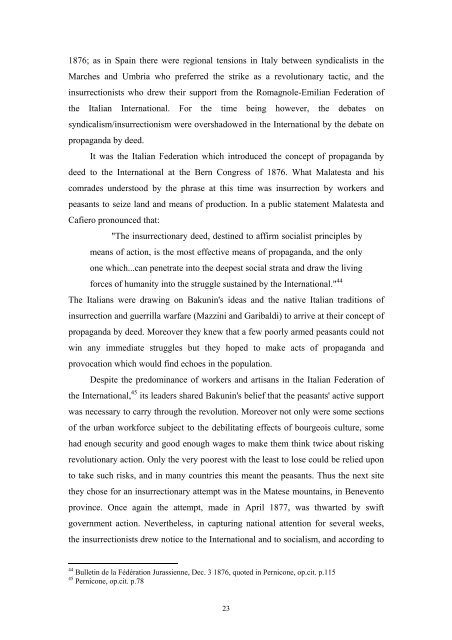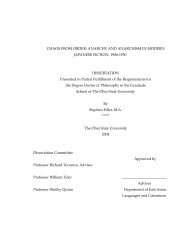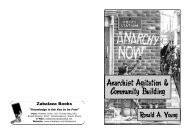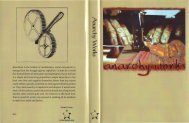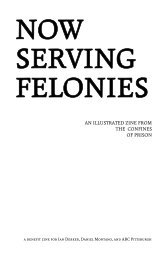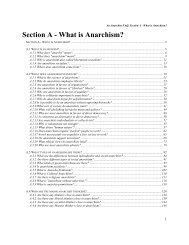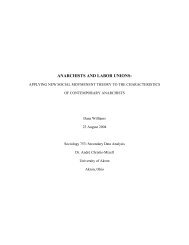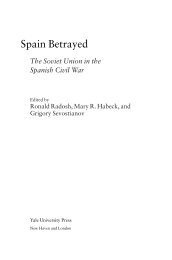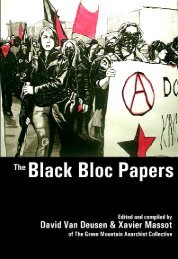Graham Gamblin - Infoshop.org
Graham Gamblin - Infoshop.org
Graham Gamblin - Infoshop.org
You also want an ePaper? Increase the reach of your titles
YUMPU automatically turns print PDFs into web optimized ePapers that Google loves.
1876; as in Spain there were regional tensions in Italy between syndicalists in the<br />
Marches and Umbria who preferred the strike as a revolutionary tactic, and the<br />
insurrectionists who drew their support from the Romagnole-Emilian Federation of<br />
the Italian International. For the time being however, the debates on<br />
syndicalism/insurrectionism were overshadowed in the International by the debate on<br />
propaganda by deed.<br />
It was the Italian Federation which introduced the concept of propaganda by<br />
deed to the International at the Bern Congress of 1876. What Malatesta and his<br />
comrades understood by the phrase at this time was insurrection by workers and<br />
peasants to seize land and means of production. In a public statement Malatesta and<br />
Cafiero pronounced that:<br />
"The insurrectionary deed, destined to affirm socialist principles by<br />
means of action, is the most effective means of propaganda, and the only<br />
one which...can penetrate into the deepest social strata and draw the living<br />
forces of humanity into the struggle sustained by the International." 44<br />
The Italians were drawing on Bakunin's ideas and the native Italian traditions of<br />
insurrection and guerrilla warfare (Mazzini and Garibaldi) to arrive at their concept of<br />
propaganda by deed. Moreover they knew that a few poorly armed peasants could not<br />
win any immediate struggles but they hoped to make acts of propaganda and<br />
provocation which would find echoes in the population.<br />
Despite the predominance of workers and artisans in the Italian Federation of<br />
the International, 45 its leaders shared Bakunin's belief that the peasants' active support<br />
was necessary to carry through the revolution. Moreover not only were some sections<br />
of the urban workforce subject to the debilitating effects of bourgeois culture, some<br />
had enough security and good enough wages to make them think twice about risking<br />
revolutionary action. Only the very poorest with the least to lose could be relied upon<br />
to take such risks, and in many countries this meant the peasants. Thus the next site<br />
they chose for an insurrectionary attempt was in the Matese mountains, in Benevento<br />
province. Once again the attempt, made in April 1877, was thwarted by swift<br />
government action. Nevertheless, in capturing national attention for several weeks,<br />
the insurrectionists drew notice to the International and to socialism, and according to<br />
44 Bulletin de la Fédération Jurassienne, Dec. 3 1876, quoted in Pernicone, op.cit. p.115<br />
45 Pernicone, op.cit. p.78<br />
23


